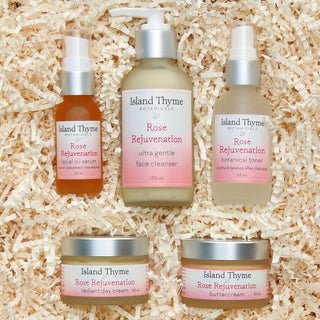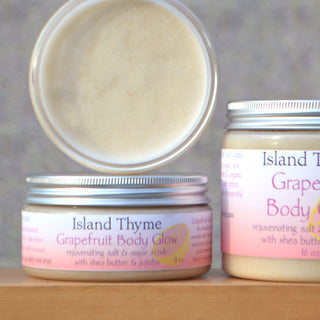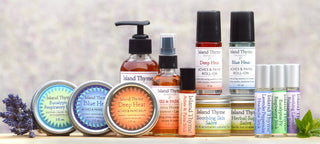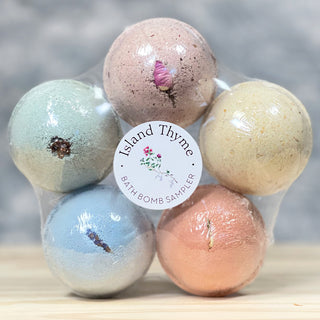Ingredient Spotlight: St John's Wort

St John's Wort is a key ingredient in customer favorites like our Aches & Pains Oil, Aches & Pains Stick, Deep Heat Balm, and Herbal Super Salve.
For over 20 years, Island Thyme has purchased wildcrafted St John’s Wort flowers from a couple who harvest them in the Bitterroot Mountains of Montana.
Ingredients like this, sourced in small batches from trusted suppliers with whom we have a long-term relationship, are part of what sets Island Thyme apart.

In July we received our annual overnight shipment of 40 pounds of freshly-harvested yellow flowers.
After a brief air-drying, we portioned the flowers into nine translucent containers and covered the flowers in sweet almond oil.
The containers spent the next two months in a sunny window at the Island Thyme HQ in Eastsound as an almost-magical process turned clear oil and yellow flowers into a vibrant red liquid.


Even though the flowers appear bright yellow to human eyes, they also contain red compounds that are soluble in oil. Crucially, sunlight is necessary to turn the precursor compounds into ruby red hypericin, which is the active ingredient that provides many of the plant's benefits.


Eliza’s work with St John’s Wort goes way back to the days before Island Thyme.
In the early ’90s she took a break from an Environmental Studies Master’s degree program to spend a year on Cortes Island in British Columbia as an apprentice to a master herbalist at Linnaea Farm.
During that apprenticeship she learned the methods of extracting and blending botanical compounds - including St John's Wort - that became the foundation of all of Island Thyme’s products.

St John's Wort got its name because it blooms around the time of the celebration of Saint John the Baptist in late June. "Wort" doesn't sound beautiful to modern ears, but it's just an old English word for "herb" or "plant."
The most common variant, Hypericum perforatum, was named because its leaves appear to have tiny holes scattered throughout if you hold them up to the light. They're not actually holes, but rather specialized glands. The glands are filled with the compounds that give the plant its medicinal properties - hypericin and hyperforin.
St John's Wort has a long history of being used topically to help with minor wounds, sunburns, abrasions, bruises, contusions, and more. Hypericin and hyperforin have been shown to have antioxidant, anti-inflammatory, and antimicrobial activities.





